

For our final full day on Oahu, we would be relying on the rental car once again to drive to the North Shore of Oahu. The capital letters applied to the North Shore indicates that it's a distinct region in its own right, a series of beachfront communities famous for having some of the best surfing anywhere in the world. During the winter months, the North Shore is pounded with enormous waves that draw the most skilled surfers from all over the globe (at the tradeoff of making the waters too dangerous for anyone else). Here in the summer the conditions were less intense although we decided to pass up swimming anyway since we had spent the previous day mostly in the water. Instead, we'd be stopping at the Dole Plantation on the drive up, exploring the main town of Haleiwa, and then doing our best to spot the local wildlife. This was intended to be a more relaxing part of the trip and we didn't try to push ourselves too hard.

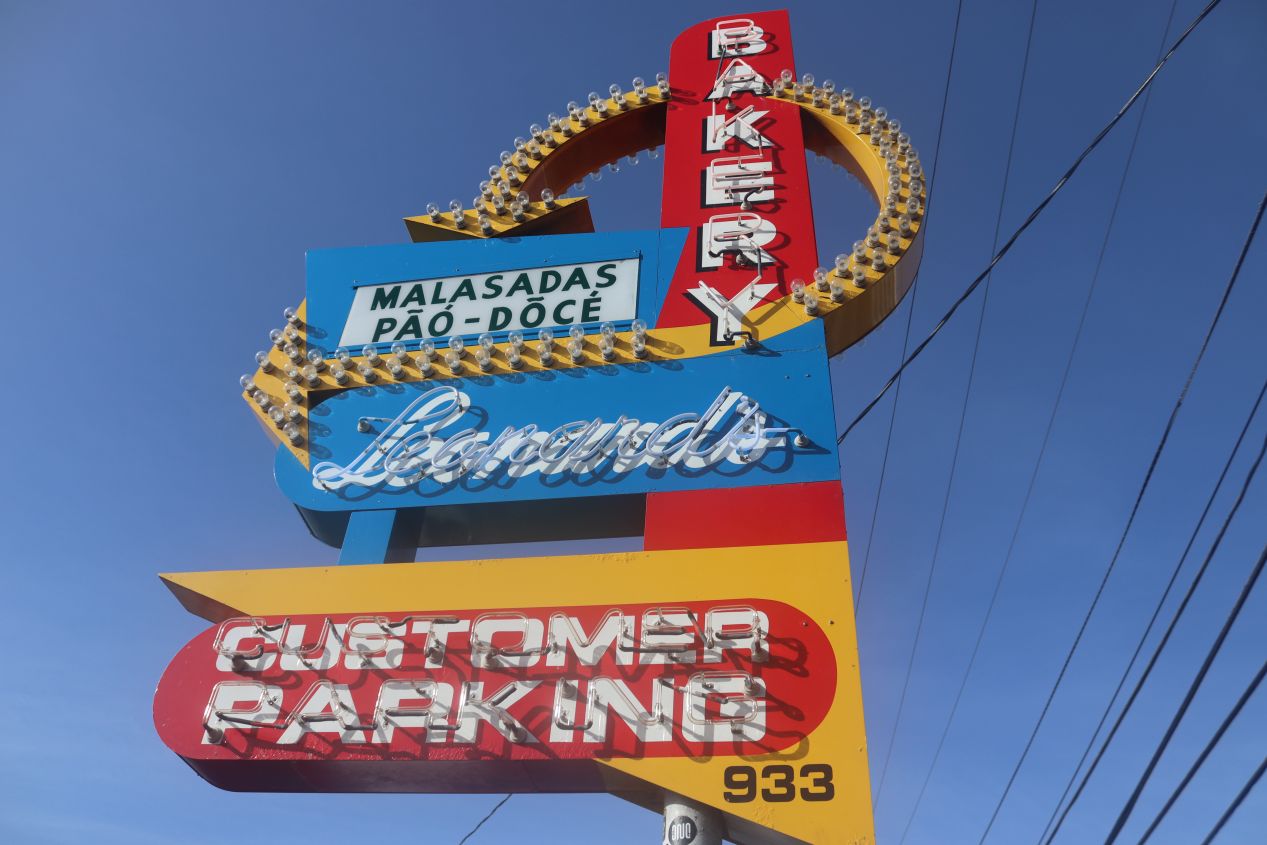


Before starting the drive to the North Shore, we stopped at a well-known local Honolulu bakery named Leonard's. This eatery was founded back in 1952 by a family of Portuguese immigrants and has been highly popular with Honolulu residents ever since. Leonard's famous products are known as "malasadas", a type of Portuguese doughnut made from fried dough that lacks the traditional hole in the center. We drove to the original Leonard's location in the morning and found that it was already packed with customers with a line stretching around the building. We had already eaten our normal breakfast (not wanting to have a meal of only doughnuts for breakfast) and decided to get one malasada from each of the three flavors available. These were the original, cinnamon sugar, and li hing options; they all tasted pretty similar with lots of sugar on each one, I think we preferred the original option the most. The food was good enough that I would have happily come back when looking for something sweet to eat.

The North Shore of Oahu runs along the top coastline of the island, traditionally starting at Ka'ena Point in the northwest and ending over by the town of Kaawa to the east. Fortunately Oahu is a pretty small island which meant that it took roughly an hour to make the drive from the resort area at Waikiki over to Haleiwa in the center of the North Shore. I have one tidbit to relate from this drive that I want to write down before it escapes my memory: for some reason, the convertible that we'd rented the previous day kept issuing a warning message every time that we drove faster than 55 miles per hour. Every 60 seconds a computerized voice would yell out a warning that we were driving too fast even though we were well within the speed limit. It was the most bizarre thing and incredibly annoying since it kept happening over and over again. Eventually Liz figured out how to turn the thing off when we pulled off the road out of frustration. We had no idea why anyone would put this kind of feature into a car - was the point to get drivers to slow down out of pure annoyance? And why was it set so low, when driving the speed limit would still trigger warning messages? Quite a mystery.

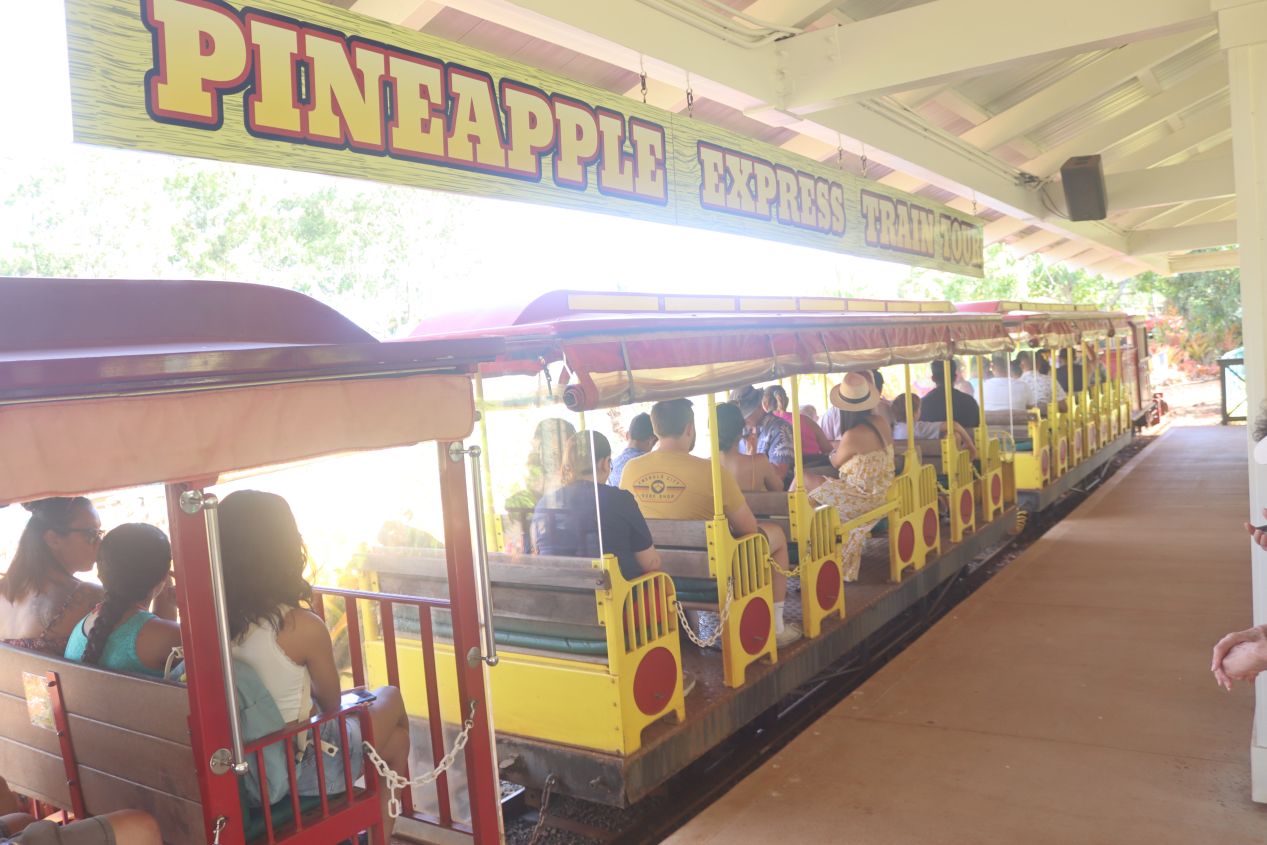


We made one main stop on the drive to the northern coast, pausing to visit the Dole Plantation which is located in the central valley of Oahu about two-thirds of the way to the North Shore. The Dole Plantation was once a place where pineapples were grown in vast quantities but has been converted into a miniature theme park of sorts that serves as a local tourist attraction. Dole is still a massive agribusiness today, among the world's largest producers of fruits and vegetables best known for tropical products like pineapples and bananas, and their corporate branding was visible everywhere around the plantation. We arrived right as the Dole Plantation was opening for the day which turned out to be a good thing because the place quickly began filling up with tourists. We started out by getting in line for the "Pineapple Express", a train ride that circled through some of the former fields of the plantation while educating visitors about how to grow tropical fruits. It was already getting hot outside and the breeze from the train's movement was welcome.

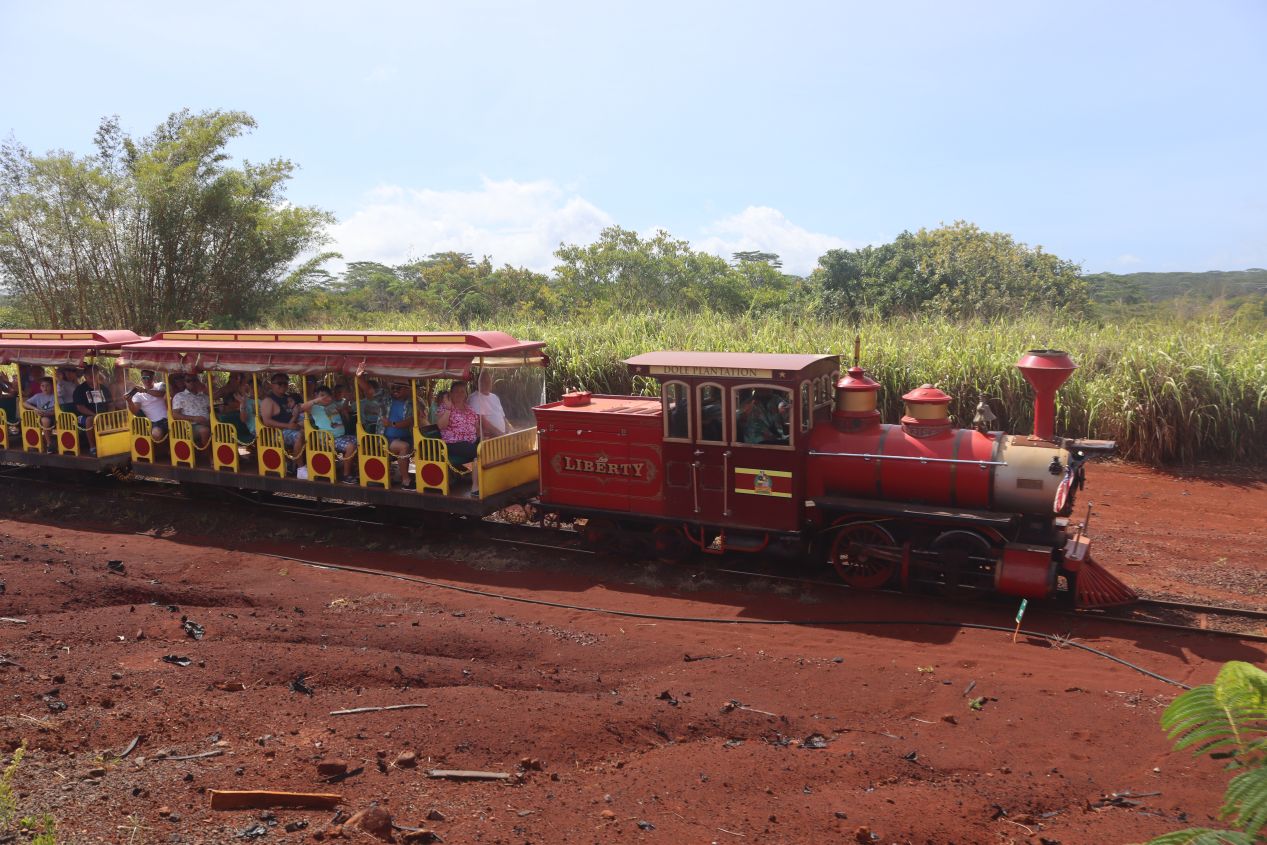


The route taken by the train passed by small fields dedicated to different tropical crops; while the plants were real, these were basically just for show as the real Dole crops are now grown elsewhere. Historically the main agricultural goods produced on Hawaii were sugar cane, pineapples, and bananas which could all be seen on this little train ride. The market for these crops crashed in the mid-20th century which was a major motivation for Hawaii diversifying its economy into other areas like tourism. Anyway, the Pineapple Express had a saccarine presentation that certainly didn't discuss any of the environmental or labor concerns which have historically been major issues for tropical fruit production. We also heard a lot about why Dole's pineapples were better than the ones grown by their corporate competitors which, OK sure, I guess it's your theme park so go ahead, make that claim if you want.  Afterwards, we checked out the Pineapple Garden Maze which turned out to be a bit of a disappointment. All of the maze rows looked exactly the same and the whole thing was exposed to bright sunlight that made exploring the maze a hot ordeal. I think this would be more fun with kids; we only stopped to find two of the eight secret stations before deciding to call it quits.
Afterwards, we checked out the Pineapple Garden Maze which turned out to be a bit of a disappointment. All of the maze rows looked exactly the same and the whole thing was exposed to bright sunlight that made exploring the maze a hot ordeal. I think this would be more fun with kids; we only stopped to find two of the eight secret stations before deciding to call it quits.




I think that the best part of the Dole Plantation might have been the massive gift store / restaurant where these pictures were taken. There were all sorts of Hawaiian-themed souvenirs for sale here along with even more stuff associated with Dole pineapples or Dole bananas in some form. I can't say that I was expecting to find a smiling pineapple plushie during this trip but you just never know when traveling. We ended up getting an ornament for our Christmas tree before passing on eating lunch here as it was simply too crowded. The Dole Plantation was worth stopping for an hour or two simply for the sheer novelty of the place, however it's not the kind of attraction worth planning the whole day around.


Less than a mile away from the Dole Plantation on the same Hawaiian State Road 99 was this hole-in-the-wall coffee shop named Green World Coffee Farm. This was the storefront for a working coffee farm (Hawaii's tropical climate and elevated hills make it a good location for growing the cocoa beans) which distinguished itself by having all sorts of vintage kitch adorning the walls. Green World Coffee Farm's website states that they buy coffee beans from all over the Hawaiian Islands and roast everything locally on the farm. The place definitely had a bit of a hippie vibe to it which wasn't stopping them from doing a brisk business as tourists stopped by driving to and from the North Shore. My memory is that Liz said the coffee wasn't too good here for what that's worth - I'm not a coffee drinker and can't weigh in myself.

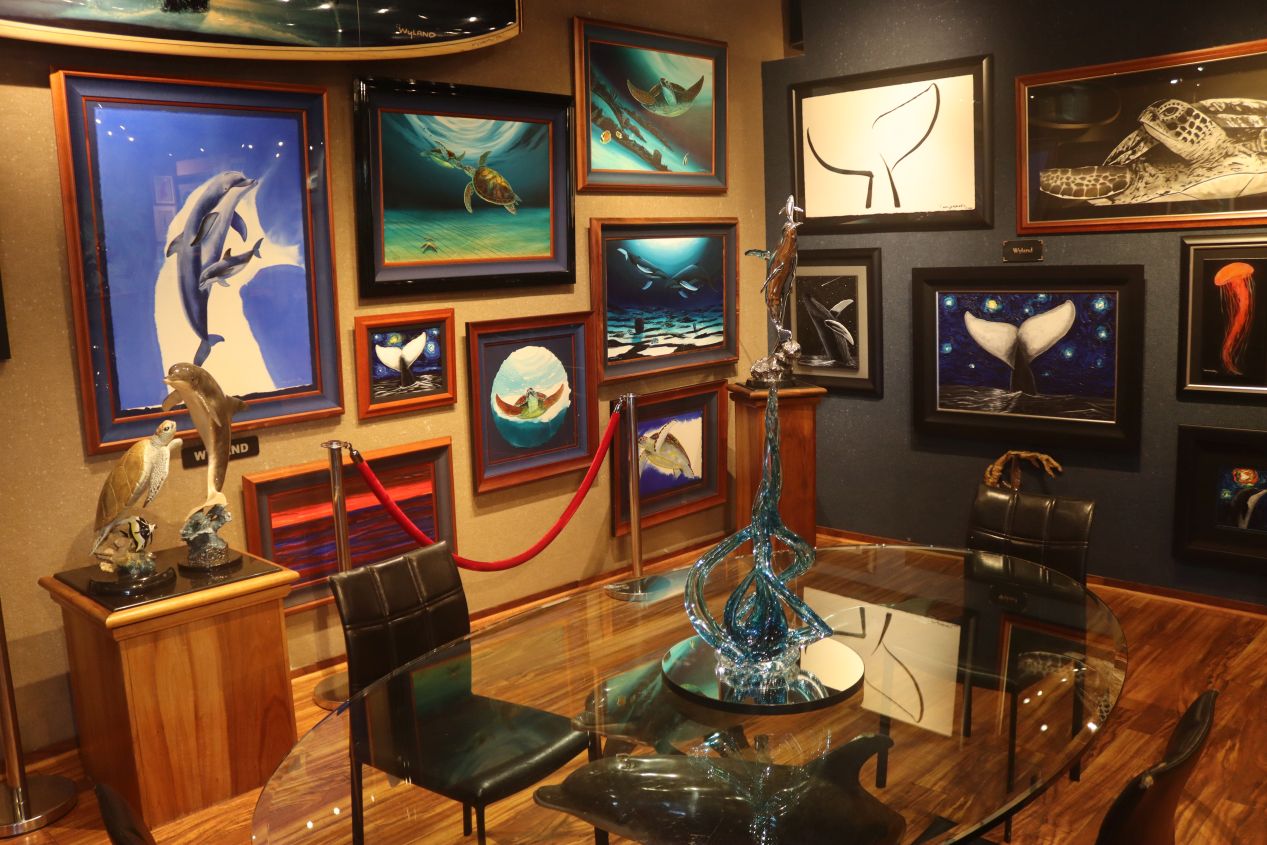


Eventually we made our way to Haleiwa, the largest town on the North Shore with approximately 5000 residents. Haleiwa is a major tourist draw and the principle road running through town (Kamehameha Highway) turned out to be a long stretch full of restaurants, hotels, and other attractions. We stopped to get lunch at a restaurant named Breakers which was perfectly serviceable without standing out in any way. (I tried to find Breakers on Google Maps and it looks like it closed in the year since we visited.) Afterwards, we wandered around the local shopping area which had several different art galleries with beautiful - and expensive! - works from local artists. One of these was named Wyland Galleries and Liz owned a funky dolphin print that her mother had purchased from this artist on an earlier visit to Hawaii back in the 1980s. We enjoyed looking at the artwork even if we lacked the money to purchase anything for our house.


One of the big draws locally in Haleiwa is shaved ice, a cone full of crushed ice with syrup flavoring added on top. The concept of shaved ice originated in Japan and was brought to Hawaii by Japanese immigrants, from where it spread to the rest of the United States over the course of the 20th century. I had grown up eating snowballs from a local place named Opie's in Catonsville, Maryland and this has always been one of my favorite treats on a hot summer day. Here in Haleiwa the famous provider of shaved ice was named Matsumoto's which was founded by a Japanese family back in the 1950s before going on to attract international attention in the 1990s. Matsumoto's turned out to be incredibly popular and the line for shaved ice stretched all the way around the little park next to it. We didn't want to wait out an hour in line so I purchased a shave ice from the considerably less famous Haleiwa Shave Ice stand which was just around the corner and sold a product which was completely identical. Here's a picture of meeting getting ready to dig in to the frosted dessert.




Haleiwa is of course a beach town which meant that it had its own beach near the restaurant area. These pictures were taken there at Haleiwa Beach Park which wasn't particularly crowded on this early afternoon. We passed by a war memorial that commemorated the soliders stationed here during World War II followed by a series of outrigger canoes that I believe were available for rental. The North Shore is best known for its surfing and this is one of the places where experts congregate during the winter months. Here in the summer we didn't spot anyone surfing out on the water and the waves were much calmer than they're said to be at the opposite end of the calendar. The scenery here was downright beautiful, exactly the stereotypical image that you would expect when thinking of a Hawaiian beach.




We drove north from Haleiwa and followed the Kamehameha Highway along the coastline of the North Shore. After only a few minutes of driving, we spotted a number of cars parked along the side of the road at a place named Laniakea Beach. We weren't sure if it was worth stopping but ultimately decided to pause and see what was going on. We were extremely glad that we did as it turned out that Laniakea Beach is known for hosting large numbers of sea turtles who come in from the ocean to feast on seaweed at the water's edge. Right away we spotted several of the turtles ("Honu" in native Hawaiian) swimming amid the waves along with others that had crawled ashore onto the rocks. This was exactly the wildlife that we were most hoping to see and we were more than happy to stop here for a while to get a closer look at the turtles.

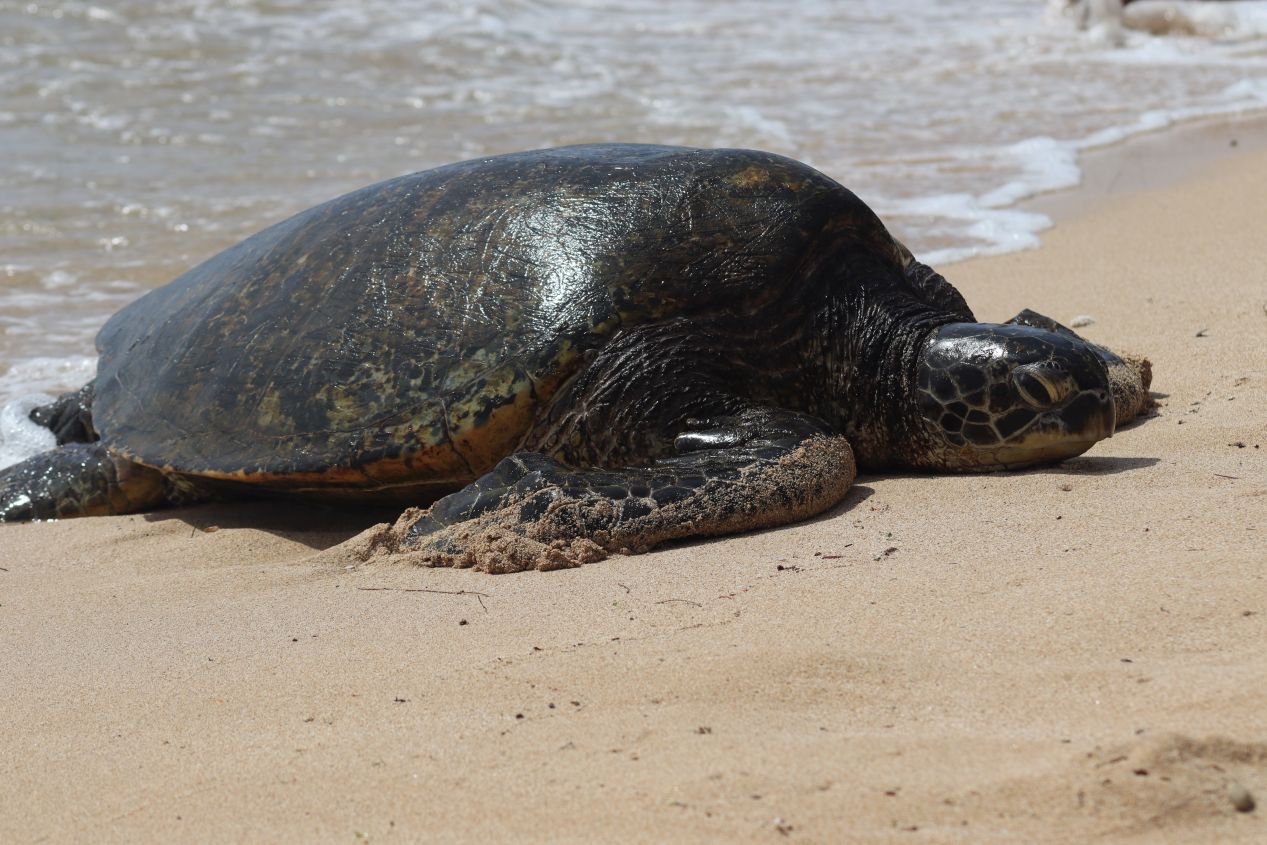


While most of the turtles remained in the water, this one decided to come ashore to take a nap for a few hours in the warm sands. There were local beach staff members here dedicated to preserving the turtles who set up a rope boundary in order to keep all of the tourists away from this guy. They track all of the turtles in the area and we found out that this one had been named Kulihi, who had been coming to Laniakea Beach intermittently since 2010. Like their landbound tortoise cousins, sea turtles can live a long time as they have essentially no natural predators after they grow to full size. This was the top highlight of our day as we hadn't expected to run across any turtles and instead found ourselves photographing half a dozen of them. It's definitely worthwhile to check out Laniakea Beach in the hopes of spotting some - you can even swim in the ocean with them as long as you keep a safe distance!

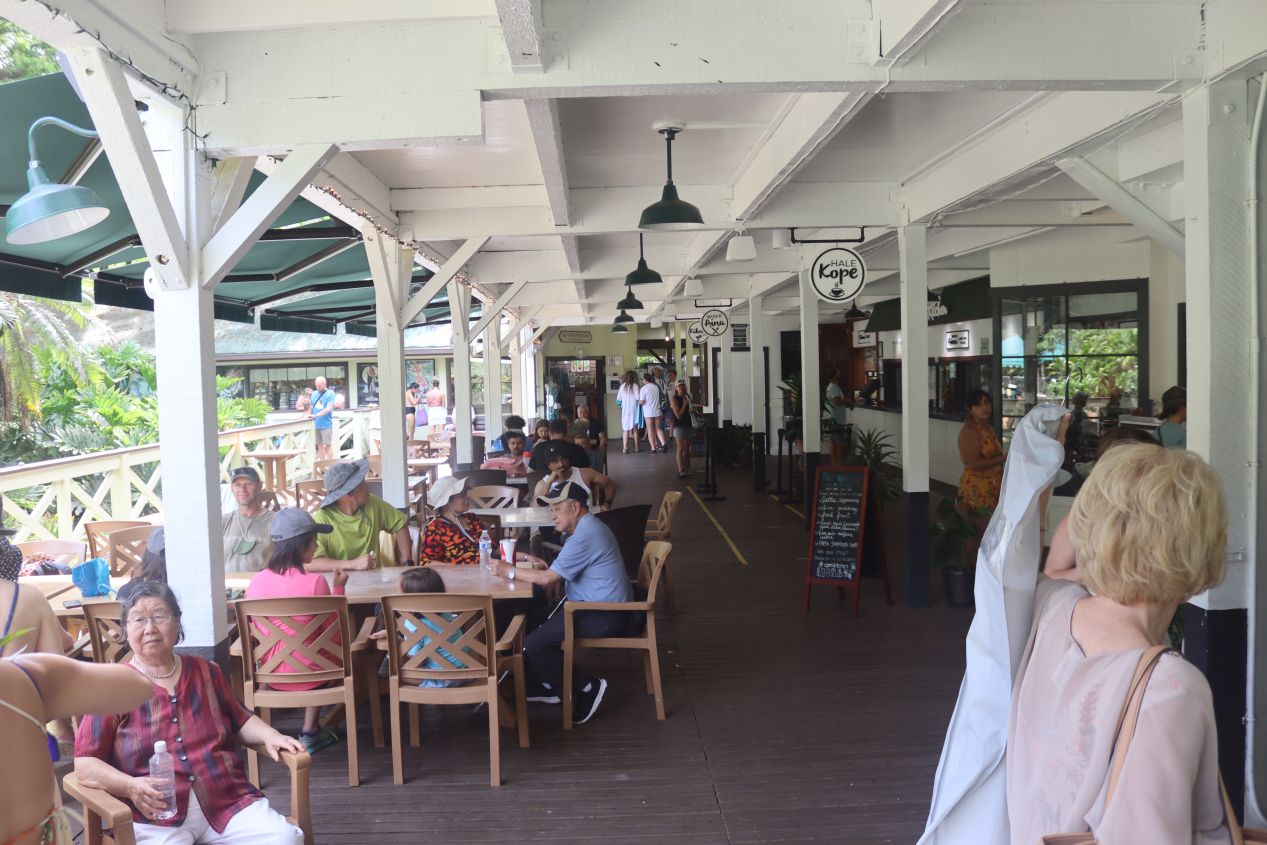


We drove a few miles further north until reaching our final major destination for the day in the form of the Waimea Valley. This is a narrow valley that runs between a series of high hills and which had great spiritual significance for the native Hawaiian people prior to the arrival of Europeans. The Hawaiians gathered here to partake in various indigenous religious activities since at least the 11th century and it was recognized as one of the most fertile locations on the island for agricultural activity. Today the Waimea Valley is a historical nature park and botanical gardens that requires a ticketed entry to see. These were pictures from the entrance area which was holding a kind of farmer's market on the day that we arrived; they also advertised that the place could be rented out for weddings and banquets and the like. We were mostly here to see the nature park which contains all sorts of plant life collected from around the Hawaiian Islands and elsewhere in Polynesia.

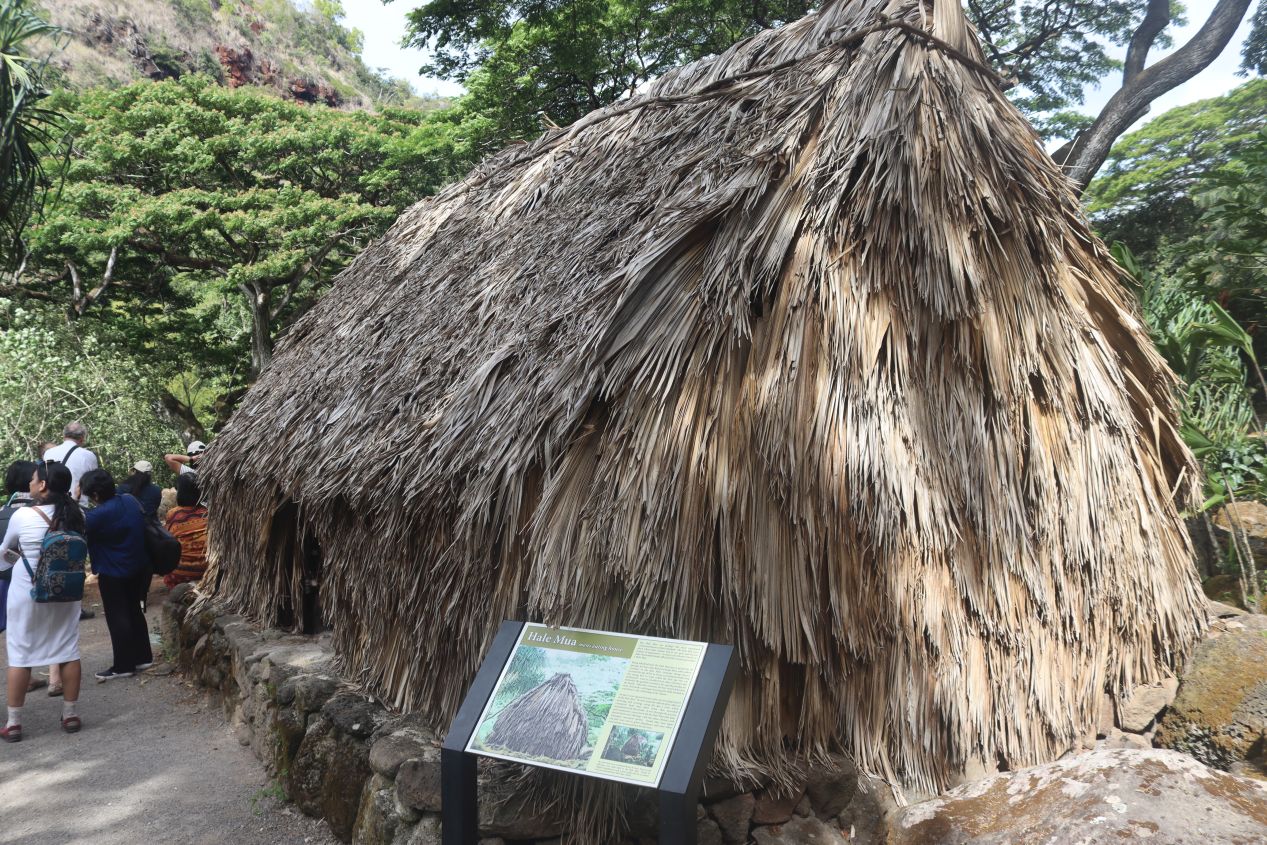


The nature park and botanical gardens at the Waimea Valley hold more than 5000 different species of plants in total which we were able to eyeball as we walked further inland along the main path. I'm not much of a plants guy so I can't relate any particular details about what we saw, lots of verdant greenery with absolutely massive leaves as seen in the first picture above. Some of the individual fronds had to be pushing 10 feet / 3 meters in length! The walking trail also contained some reconstructed houses from traditional Hawaiian society in the hopes of depicting what pre-colonial life would have looked like here. Native Hawaiian society could be rigidly hierarchical in nature and definitely didn't look like it would have been much fun for anyone who wasn't part of the upper class, much like life anywhere in the world in pre-industrial days.




The walking trail ran for about a mile before reaching its terminus at Waimea Falls. This is the spot where Kamananui Stream plunges 45 feet / 14 meters down to the rocks below to form a pool that's roughly 30 feet / 10 meters in depth. We saw some pictures that captured the falls at different times throughout the year and here in the summer was definitely a point where the water flow was at the low end; the waterfall can transform into a raging torrent following heavy periods of rain. Waimea Valley allows visitors to swim in the pool at the base of the falls and even rents out swimming gear and floating body boards to tourists. We weren't dressed for swimming and didn't have any real desire to jump into the pool although it did look cool on a hot summer day. From this ending point on the trail, we now had to turn around and return back the same way that we'd arrived since there was no other way of getting back to the entrance. Liz was able to ride the little shuttle bus back to the visitor's center while I was left jogging after the thing after it pulled out of the station.




We concluded this day of sightseeing by getting dinner at a nearby barbeque place named the Smoking Boar and the Coconut. Located slightly outside the main restaurant row in Haleiwa, the Smoking Boar served plates of chicken, ribs, roast pork, and several different types of fish all smothered in gravy and BBQ sauce. The portion sizes were gigantic and we both ended up having to throw away some of our food which was a real shame because everything was delicious to eat. It was a definite hole-in-the-wall place that we were happy to have found when searching for restaurants in the area on Google Maps.
That was the end of our trip to the North Shore and more broadly our time on Oahu. We drove back to Waikiki and turned in the rental car convertible before heading to the airport the next day for our flight to the next Hawaiian island. We would be visiting the Big Island of Hawaii for the second half of our vacation, trading in the high rises of Waikiki for active volcanoes and black sand beaches. First up would be Kailua-Kona on the western side of the island where there was an underwater scuba diving adventure waiting for me.



